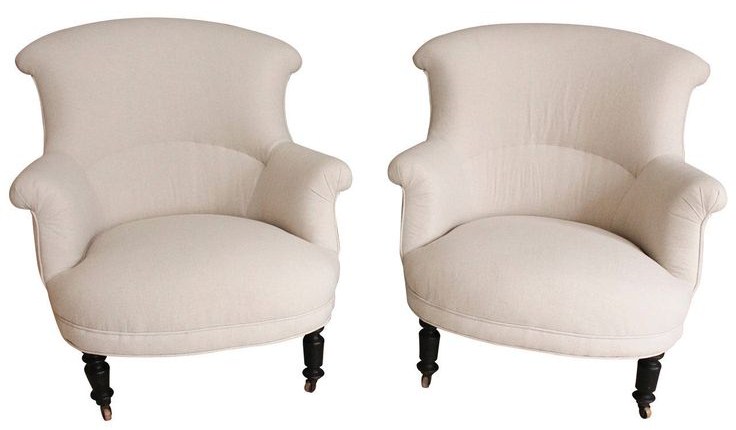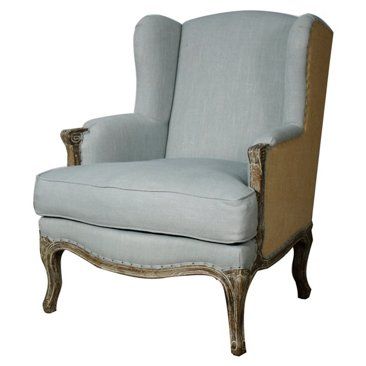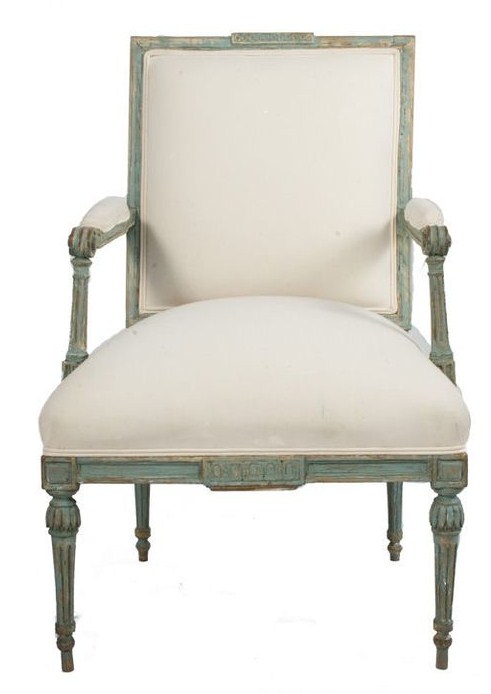“After about seven years, I could buy a really nice piece of furniture once a year,” she […]
Category: Swedish Feed
See more pictures of these wall paintings on Miras Mirakel’s blog. Picture Credit – naturbilder.biz […]
HomeGoods Style Expert Beth Diana Smith predicts that, in 2022, many will go green by decorating around green-hued […]
Look at this winter cake designed by Maria_Altynbaeva. If you are looking for a European themed […]
Lighter Colors are used in this interior, whose picture appeared on the cover of Classic Swedish Interiors 1. […]
In this link, Quinn pieces together 30 of the best gray paint shades from Behr. Where it gets […]
Chinoiserie Green Gold Late 1700s Gustavian Rococo Mora Clock – 1st Dibs Swedish Long Case Mora […]
The Home Office When the country was instructed to work from home if possible, there were some happy […]
Dawn Hill Antiques Swedish furniture is in a class of its own. From the exuberant decoration of the […]
Larsson, Carl (1853-1919) Among the Swedish artist Carl Larsson’s many watercolours of the house he shared with his […]
In the nine years since they founded D. Larsson Interior and Antikhandel, Daniel and Cristina Larsson have become […]
As a former editor for home decor magazines, Dara Caponigro has spent her career immersed in decorating. Dara […]
Swedish 18th Century Gustavian Pine Desk –1st Dibs The regions fondness for natural materials, muted color palettes and […]
1. Being Afraid Of Contrast “People with great style have a natural understanding of scale and proportion,” New York-based […]
This beautiful home is decorated around pops of lemon yellow. Swedish antiques can be seen through out this […]
In the Swedish archipelago, designer Marshall Watson let the landscape guide his palette. The result is a serene […]
Located in a sunny 1,250-square-foot bungalow, Madre features children’s clothing and accessories, furniture, lighting, artwork, handmade ceramics, […]
[vc_row][vc_column][vc_single_image image=”26617″ img_size=”large” alignment=”right”][vc_column_text]Fabric can be costly today, particularly when you are requiring a great deal of it. […]
Picture Credit – ladyinspirationsblogg.se Guest Post – Jason Phillips Elegance and style along with a sense of simplicity […]
Check out these absolutely beautiful pictures of Jenny’s studio space made over with plywood cut into planks: I […]
Can you see yourself in some of these? Vogue pulls together 12 pieces of advice from design experts […]
Adding stain over paint on furniture, or exterior wood surfaces such as siding or a deck can […]
Q: Clearly, you are scholars on Scandinavian style. For you, what is the essence of it? A: Recognition […]
This vintage butlers desk has the perfect lines for a Swedish Gustavian styled home. In the picture above […]
Christine Adams Wood Finishing Technical Writer at General Finishes October 21, 2017 A TUTORIAL ON WATER BASED TOP […]
Swedish design in American interiors is at an all-time high. Chosen for its qualities not as a fad […]
Christine Adams Wood Finishing Technical Writer at General Finishes January 6 · 2018 is here and it is […]
Let’s find the best can of gold spray paint I bought a bunch of mini terracotta pots to […]
Guest Post by Jason Phillips The 18th century Swedish interior was a manifestation of neo-classism across Europe. It […]
I don’t know what kind of leader King Gustav III of Sweden was, but he really had some […]
A Swedish twist on French neoclassicism, Gustavian décor may date back to the 18th century, but its suddenly popping […]
Children are gifts that need to be pampered every time. When you are expectant and planning to prepare […]
A New Dissertation From Uppsala University Shows How Gustavian Style Has Defined Swedish Tastes In Art Why has […]
This post was featured in the 18th Century Sewing Group Christine Yoo Millar with Matthew Millar. After 375 […]
Picture Credit Quality Is Key On Ebay Image 1 source: www.swedishinteriordesign.co.uk, blog.thehighboy.com, Guest Post -Chloe Taylor Scandinavian […]
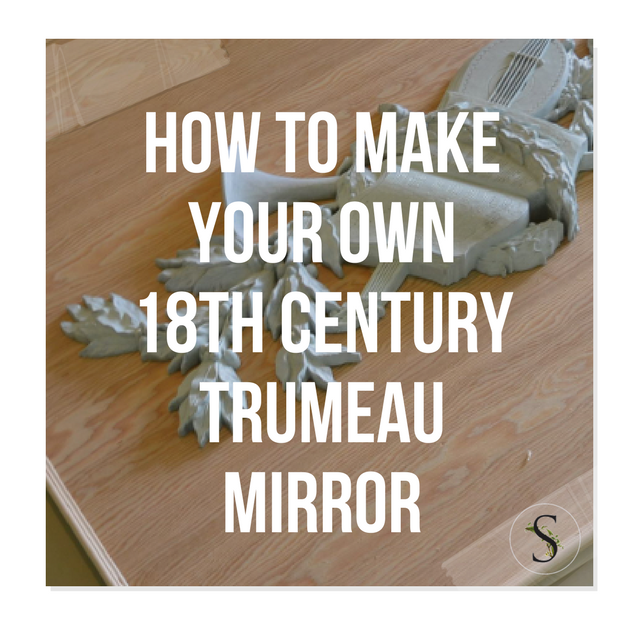
If you are looking for an inexpensive way to dress up your walls, this might be it. I happen to adore the 18th century style, but don’t want to spend a ton of money to achieve the look in my home.
Decorative carved plaques were quite popular in France, and eventually Sweden perfected the look. Musical instruments, hunting motifs, and florals seemed to be the most popular carved designs in the 17th and 18th centuries. These wood carved decorative elements were often seen framed within wooden decorative trim and commonly found above doorways, or fireplaces.
Today you can see these beautiful plaques on pieces of wood in some of the most beautiful interiors decorated after the European styles of the past.
I have created a few of these plaques for my house and I really love how they have turned out. They give me the look of a large piece of art, without having to complicate my interior with lots of colors. Best of all, this project is fairly simple to create.
Vintage Syroco
Rococo is a design most popular in the 1730s. The design heavily influenced architecture, painting, sculpture and eventually furniture and decor.
Mirrors made after these styles became popular in the 50’s by a company called Syracuse Ornamental Company who at the time produced ornamental carvings to embellish furniture. The company was founded in the late 1890’s by Adolph Holstein who was a talented Austrian woodcarver.
The opportunity for his business to expand when Holstein developed a casting technique which produced a high quality product without the laborious intensity and time of wood carving. Holstein used Syroco to create perfect replicas of their original carvings.
Many of their molds featured a wood grain within the mold, giving their overall product a higher end feel for less money. As the modern movement hit in the 1940’s their business turned from ornamental embellishments to novelty items which didn’t profit as well, so the company returned to making the highly ornate wall mirrors, sconces, and decorations in the 1950’s which became a huge sensation.
These very same items from the 50’s can be found on ebay, and made to look high end with layers of paint in shades of gray, white and beige paint for a higher end European look.
The materials you need are plywood, decorative trim, a decorative element that you want to frame, a miter box and a compressor with a nailing attachment certainly helps.
The pieces that I have purchased for my creations are Dogwall plaques from syroco, and two large vintage burwood musical plaques.
I tend to make my projects as simple as possible. For this project I simply cut a piece of plywood, and made my own miter box to hand cut the decorative edging that was placed around the edges of the wood.
The decorative edging I used was from Home Depot. You can find a picture with the number of the product below. The edging was simple, and easy to work with.
I made my miter box by simply screwing a piece of 2 x 4 wood together with two wood sides. I then took my miter saw, and cut the wood to give me a guide. It was as simple as that. I found that using my saw was not only dangerous with thin wood edging, but also that the wood would be torn apart with using the fast blade. My advice, buy a miter box or make your own like I did.
Next, I used a compressor with a nailing attachment to add the trim and the decorative element. I used wood filler to fill these holes, along with adding wood putty to the sides of the plywood to give it a finished appearance.
In a previous article, I described using Durhams putty to seal the edges between the wood and the decorative relief. You can find more pictures of this project in this post there. The beauty of Durhams putty is that it dries in a shade of light yellow. When you paint your object, what I do is wash off parts of the motif with a damp cloth, and the putty appears to look like wood painted. Working with this product is a perfect way of faking this whole look.
I love this look and these plaques happen to be my favorite pieces in my house. What do you think? Do you love it?
More Inspiration:
- A plaque made by Bliss Studio- here
- Plaster medallions of Carl Michael Bellman & Ulla Hopken – here
-
Swedish Plaster Medallions- here
- Wood Wall Plaques- here
Burwood musical plaques before they were painted
The molding I used from Home Depot
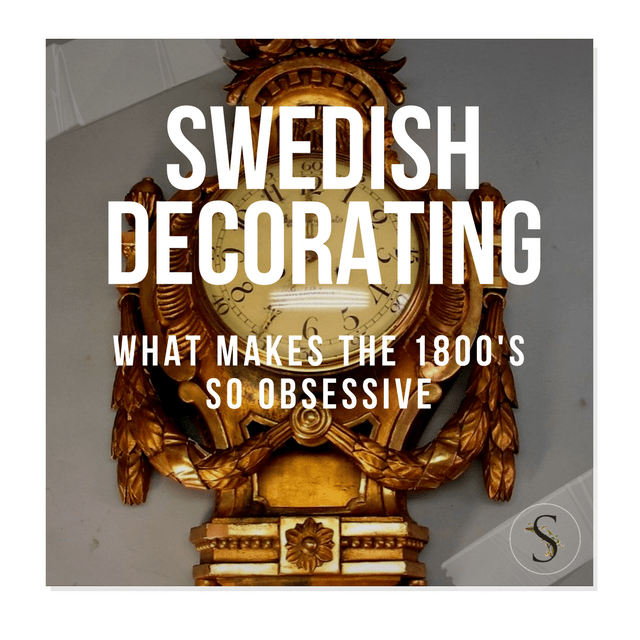

Pair of Late Gustavian / Neoclassical Chairs

The Scandinavians are known around the world for creating simple, stylish and functional furniture; its style reflects its origins, furniture and décor which maximized the available light and space. The look is minimal, yet honest with an earthy flavor. It is the perfect style to use when you are looking to revitalize an old, gloomy house and create a contemporary yet practical flare. To really get the 1800s Swedish feel in your home you will need to follow these tips:
Wooden Flooring
The flooring should be light and preferably wood, although a laminate will have the same effect. This allows the sunlight entering the house to bounce around the room and help to create a feeling of space, warmth and light. The bathroom is the only exception to this rule as a darker, warmer color will make the room feel more inviting.
Color Palettes Of Brown And Grey
The original Scandinavian design would be for white walls and a pale grey or light blue; either as a feature wall or as part of the design; the color of the furniture or the accessories. However, there have been several other influences in the Scandinavian scene and it is possible to introduce some bright colors through the accessories or even the flowers in the room. These will draw the eye and make the room feel friendly and inviting. It is also possible to opt for wood on one of the walls; it is a natural material and adds a layer of warmth to the property. If the wood is too yellow for your taste than it can be white washed or you can use grey oil to dilute the color.
Furniture Lines
The handmade designer furniture you use in your Scandinavian room must have clean lines. The majority of Swedish furniture elements will already have the lines you require. This simplistic approach will provide a calm, tranquil room in which to relax.
Functional Furniture
The Swedish pride themselves on providing stylish yet functional furniture. Every piece has a specific purpose and it is well designed for that purpose. This ethic should apply across the entire house; it avoids unnecessary clutter and encourages the simple, minimalistic style. Furniture may have been designed recently or may be genuine antique pieces. Either will work as the elements of design have stayed true throughout time; every Swedish piece has a classic beauty in its simplicity and will sit perfectly in a room today. The way this furniture has been designed allows it to blend with any room, creating a stylish, yet practical living area.
Corner Fire
Swedish winters are generally much colder than those in many other parts of the world. A fire is an essential part of surviving these winters. However, they are not the feature point of the room; they are seen as another piece of furniture. Swedish fires are often tiled and sit in the corner of the room. They are usually very simple in design and may hardly even be noticed with their doors closed. The corner approach also allows the heat to radiate out across the room effectively.
The Environment
The Swedish are well known for adding environmentally friendly features to their houses. This can be as simply as embracing the energy efficient light bulbs, to adding solar panels or a ground source heat pump. Insulation and triple glazing are also standard on new builds and help to create the warm, inviting interior of a Swedish house.
Less is more
Scandinavian design does not incorporate an abundance of ornaments and accessories. The approach is minimalistic in order to keep the clean lines and bright spaces that they desire. Among the few accessories will usually be a plant or bunch of flowers to add a touch of the outside to the décor. Blend your minimalistic approach with natural materials and you will have a beautiful house that you can
actually live in!
Embrace the Swedish home design and transform your home into a welcoming, truly inviting living nest. Choose a dominant color that best lives up to your expectations, and don’t be afraid to improvise. Oversized throw pillows, flower pots with seasonal flowers and custom-made furniture items are everything you need for a Swedish-inspired home.

A Swedish Early Gustavian Period Console Table circa 1770 1st dibs

19th Century Swedish Gustavian Pedestal Table

Set of Four 18th Century Swedish Gustavian Chairs

19th Century Swedish Gustavian Style Bench
Tricia Foley {staircase} by recent settlers on Flickr “I think that many people try to copy what’s trendy […]
Theriault’s Antique Doll Auctions, Found on theriaults.com –Antique baby carriage by rubyblossom. on Flickr Stationary Panel Crib W/ […]
Home Office Chair with Casters, Unfinished$130 (Affiliate Link) Sidetable from International Concepts (Affiliate link)- $84 here Imagine […]
19th Century Swedish Painted Cabinets – Find It on Ebay Vintage Mid-Century Daybed by Karl-Erik Ekselius for Dux […]
An Island-Inspired House in Oslo… Norway Interior designer Nicolette Horn brings a bit of the Bahamas into her […]
Volga Linen Guest Post, Jason Phillips Linen has been a part of humanity for thousands of years. The […]
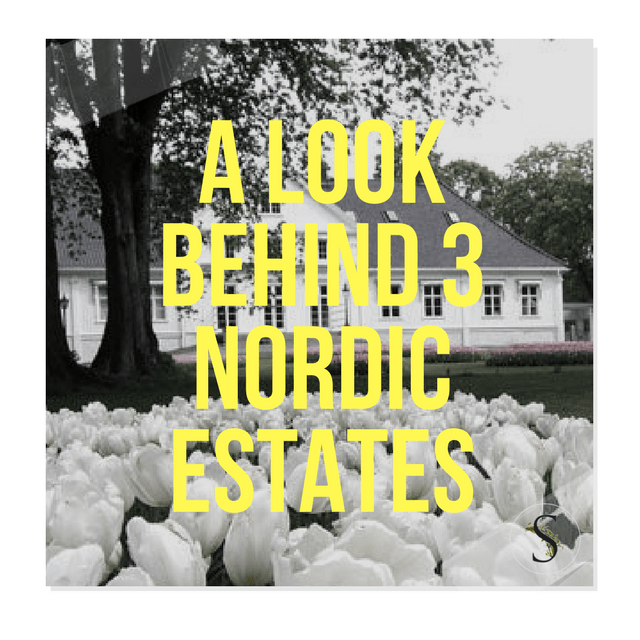
Picture Credit- Unofficial Royalty
Gjestestuene at Norsk Folkemuseum- commons.wikimedia.org
Gjestestuene –Gjestestuene is beautifully situated at the Norwegian Folk Museum in Oslo. Gjestestuene is surrounded by old farmsteads and a stave church from the 1200s. Gjestestuene was built in 1917 by the renowned architect Magnus Poulsson. His style was was quite popular in the early 1900s. Today you can host a dinner party or a wedding at Gjestestuene, as they cater to groups as little as 15 and as large as 250 people.
Gjestestuene selskapslokaler
Strømsborgveien 2, 0287 Oslo, Norway
+47 488 91 603
Bakkehuset-( Bakkehusmuseet ) is a historic house museum in the Frederiksberg district of Copenhagen, Denmark. Dating from the 1520s, this building has been used for a number of functions. It was used as a farmhouse, inn, a home, as well as a hospital and orphanage. Today, it functions as a museum has a beautiful small park will be located next to the museum.
Rahbeks Alle 23, 1801 Frederiksberg C, Denmark
+45 33 31 43 62
Bygdø Royal Farm –Bygdø Royal Farm is located in Oslo, Norway and today is owned by the state but at the King’s disposal. Bygdø Royal Farm has been owned or used by Norwegian monarchs since 1305. The farm dates back to the Middle Ages. King Christian Frederik resided here during his reign in 1814. In 1837 King Carl Johan bought Bygdø Royal Farm from the state. He had the French gardens re-landscaped in the more natural English style, and enlarged the lake to its current size. The property remained in royal hands until 1863, when King Carl IV sold it back to the state. In 1905, King Haakon VII and Queen Maud began using the farm as their permanent summer residence and enabled the Queen to be able to pursue her interest in gardening.
Bygdø is one of the best examples of an upper class 17-18th-century country houses in Norway. At that time it was the custom in all the Scandinavian countries for the upper classes to spend the winter in the city and move to estates in the surrounding countryside during the summer. The estates were actively farmed in the summer to supply during the winter months in the city.
The present main house was built by Count Christian Rantzau, from 1731 to 1739, as his summer residence. By 1734 the house was complete and the property had been redesigned in the contemporary Baroque style. The house is a fine example of Norwegian early Baroque panel architecture. The main building and garden are designed to complement each other. The development of the garden reflects the history of Norwegian landscape gardening from the early 18th century to the first decades of the 20th. After the death of King Olav the park was somewhat neglected, but in 2003 restoration work begun that was completed by summer 2007, when the King and Queen resumed the tradition of using Bygdø as summer residence. Source royalcourt.no
Bygdøy, 0287 Oslo, Norway
+47 22 04 87 00
Bakkehuset- en.wikipedia.org
Bakkehuset bakkehusmuseet.dk
Are you interested in seeing the best antiques Sweden has to offer? The highest quality finds will be […]
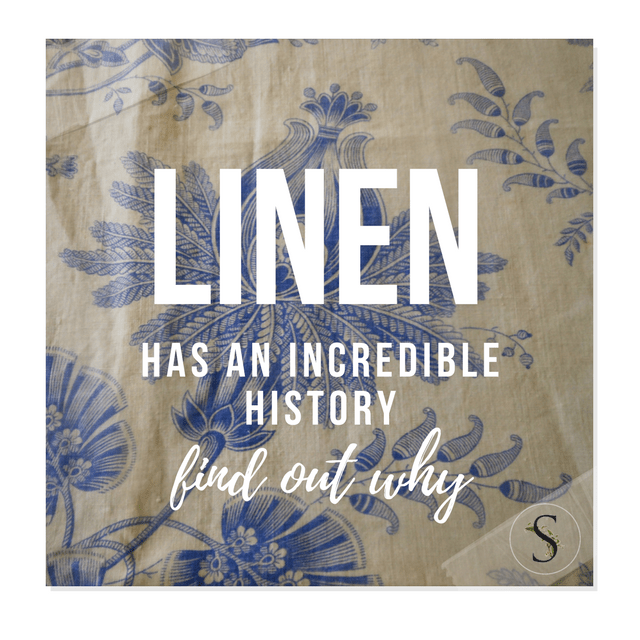
The Swedish Country House by Susanna Scherman- Found on homedesign.marthastewart.com
Guest Post – Jason Phillips
Linen is a type of fabric or textile manufactured from fibers. The making process is laborious, and the result is truly remarkable. Many things are made of linen including towels, aprons, bags, tablecloths, bed linens, runners, curtains, drapes, upholstery covers and more. Textiles that feature a linen weave texture, even those made in combination with hemp or cotton, are also referred to as linens; some have specific names, such as madapolam, which is a fine cotton yard wove in linen style.
Linen textiles have an incredible history. Fragments of seeds, yards, straw and additional types of materials date back to 8000 BC, and were usually found in Swedish homes. In Ancient Egypt, linens were used as currency, and the mummies had to be wrapped in this luxury material as a symbol of purity and light. Nowadays, fine linens are high-priced yet incredibly qualitative.
Curtains And Drapes
In the early 18th century most homes still used shutters to block light and make the place appear private and secluded from the eyes of people on the street. However, they had a fuller texture and came in different styles than in the 17th century. As for the materials, main fabrics were cotton chintz, taffeta, and velvet. A valance or pelmet cornice was usually employed to hide the workings. Then the paired curtains made an entrance. They were topped with stiffened pelmets and featured embroidery work and appliqués; also, they had a really elegant shape. The linen fabric used for the curtains included Rococo motifs, including knots of ribbons, garlands of flowers, and leave fronds.
By the middle of the century, pelmets became a lot softer, with small tails and shallow swagging and bells. Portieres had lighter curtains and deeper pelmets designed in Italian style. Store marquises, also known as light silk festoons, were widely used with beautifully draped pelmets. At the end of the 18th century, roller blinds made an entrance as well. Their use was first recorded in 1726, in London.
Fabrics
There was a great variety of fancy fabrics one could select from in the 18th century. There was one industry in particular that thrived – the silk industry. Fragile florals, lace, and scallop, as well as patterns that incorporated doves and other beautiful prints were in high demand. Inside people’s homes silk was the most appreciated. It was used for linings, beds, tables and inner covers. During that time the bed in the bedroom had sophisticated hangings, which were also made of silk; those who could afford to invest in such fancy linens, bought Genoese silk velvet.
For the windows, brocades and silk damasks were highly appreciated. For hangings, brocatelle was still in high demand. Ribbed silk, satin, chintz, taffeta and clouded silk were all exceptional materials used mainly for curtains. Those who couldn’t afford such fancy linens had great alternatives, such as moreen for draperies and beds, and velvet or silk mohair for chair coverings.
The most exclusive chintz was manufactured in Versailles, and was produced by Jouy-en-Josas. However, throughout the 18th century, in England and France there was an anti-cloth law materializing. It was aimed at protecting silk and wool industries. The production went full ahead in 1770.
Sophisticated Trimmings
In the 18th century there was a wide variety of sophisticated trimmings materializing in Germany, Ireland, the Netherlands, England and Switzerland, mainly due to the battle of Huguenot craftsmen n the 1600s France. Narrow and broad bands of rich colored lace were used thus contrasting the rich, new techniques. Furthermore, fancy details started being used such as frogging, gold galloon and artificial flowers on valance and pelmets; these were meant to replace entirely heavy trims found in the 17th century.Embroidered, tie backs or appliquéd and ended with ribbons or bows became a new feature in home décor that many people adopted for their window treatments.
Decorating with 18th century linens from the French period will add sophistication to your personal space. Give your windows the treatment they deserve and use luxury linen materials for the curtains and shades. Make your bedroom seem romantic, your living area chic and welcoming, and your kitchen practical and fun. Consider the best materials and the finest shapes, and your entire home will come back to life.
19th Century France Napoleon III Settee
Pair of 19th Century French, Napoleon III Armchairs
Gustavian Lounge Chair, Sweden, c.1780, Found on 1stdibs.com
Anna Maria King Upholstered Bed Found on ballarddesigns.com Mlinaric, Henry and Zervudachi Sweden Early 20th Century A great […]
19th Century Swedish Painted Chest Find It on Ebay Ann Joerner Antiques, William Word Fine Antiques Swedish richly […]
Guest Post Jason Phillips Your kid’s bedroom has to look fun and entertaining; otherwise the little ones may […]
Martha Stewart showed how her wool and silk covered wingback chairs were given a new look for the […]








